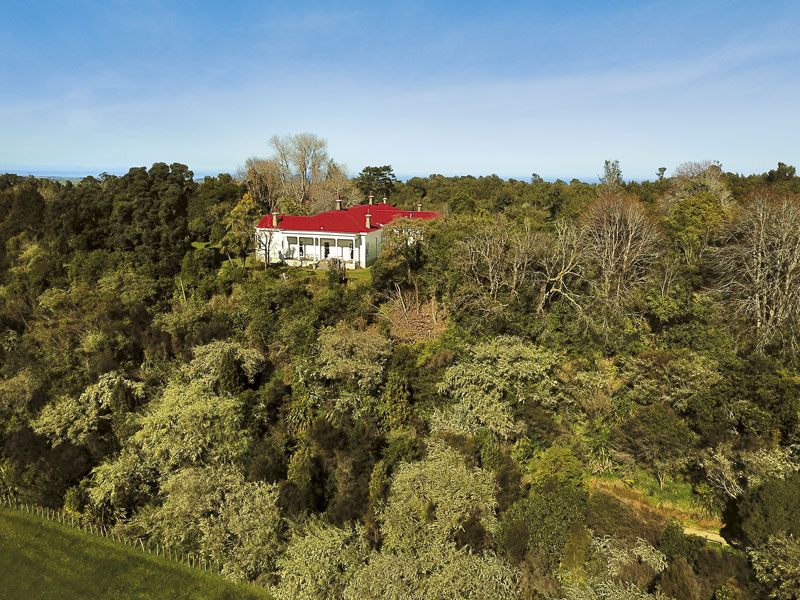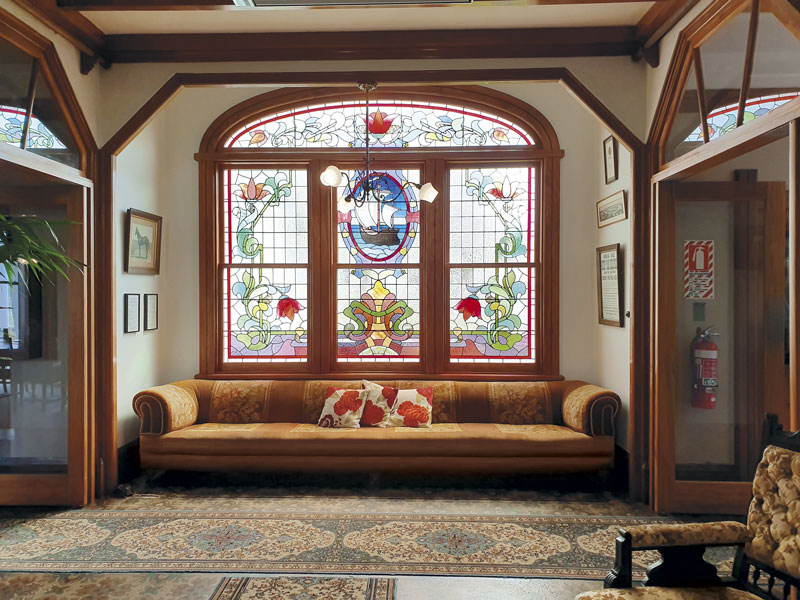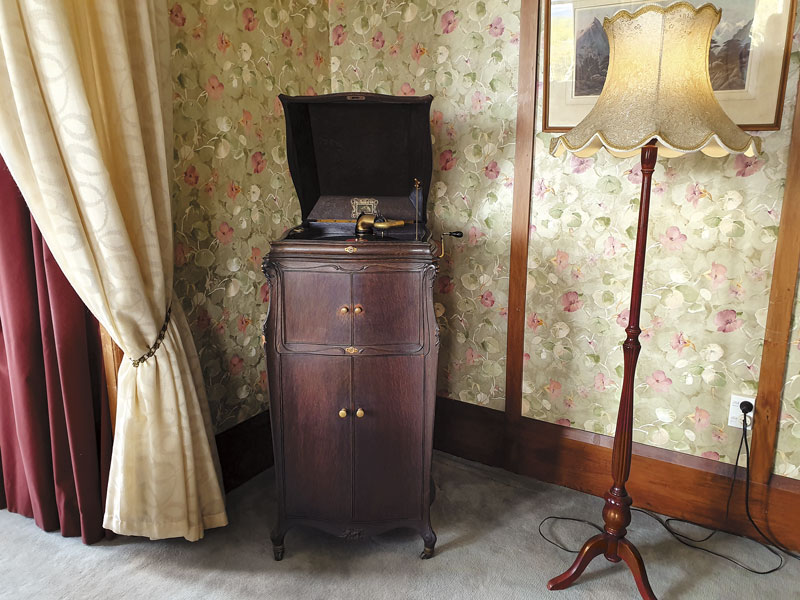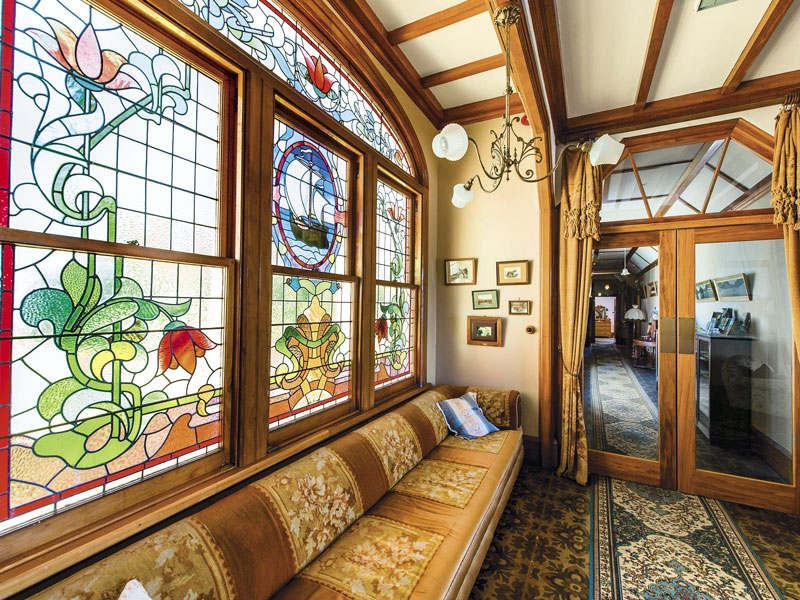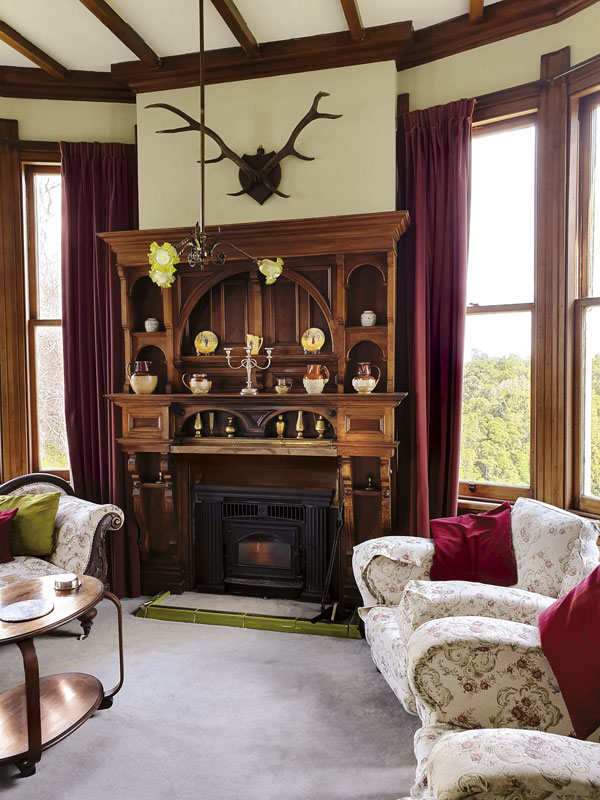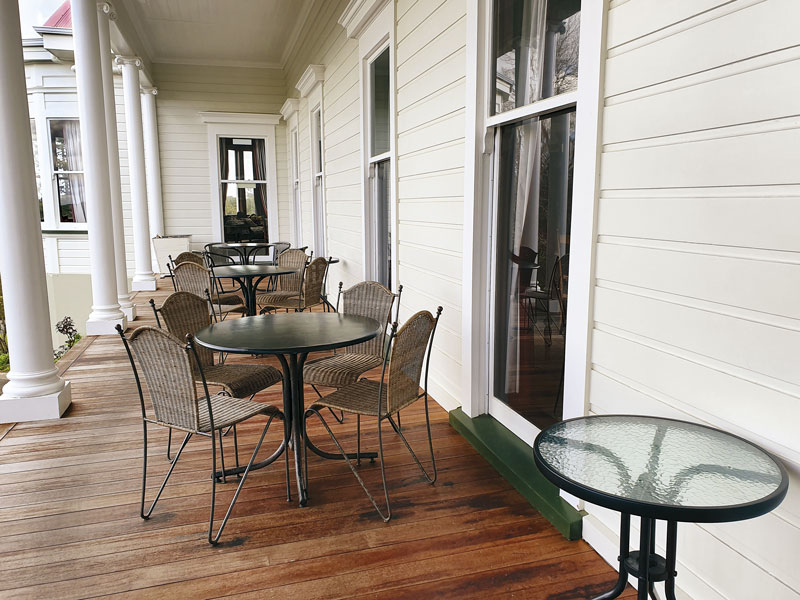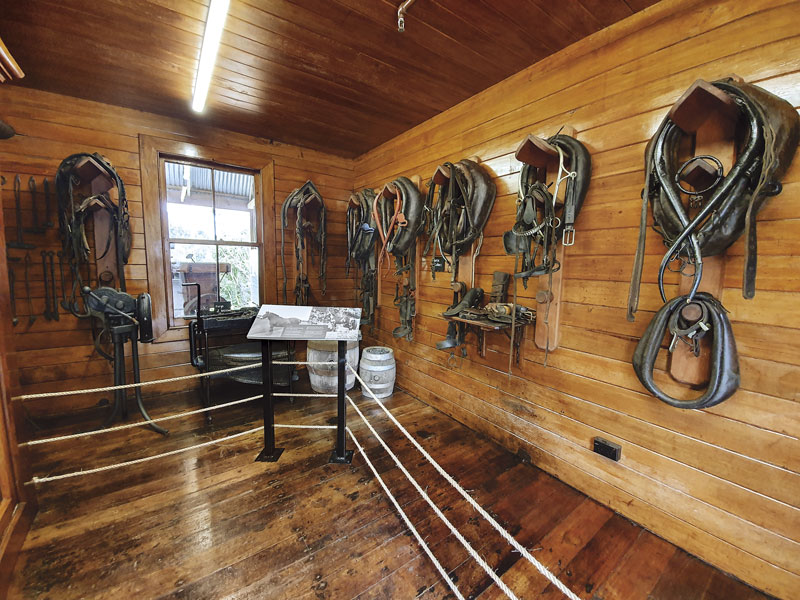I first visited Bushy Park Sanctuary, a 30-minute drive from Whanganui, about a year ago, at which time the park’s historic homestead and stable buildings were encased in scaffolding and undergoing intensive restoration.
With the buildings off-limits, I spent a few hours wandering through the forest, enjoying birdsong and solitude. Last month, upon hearing the homestead was now open to visitors, I returned and was amazed at how beautifully it, and the surrounding buildings, have been restored.
Historic homestead
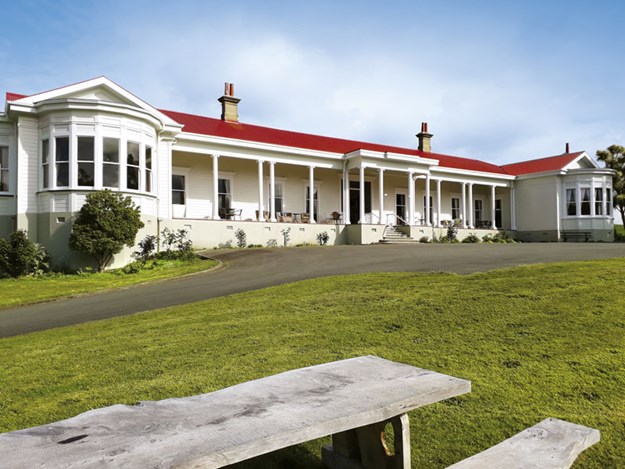 |
The homestead’s exterior |
At the heart of the sanctuary, Bushy Park Homestead is a Category 1 heritage building built in 1906. The 22-room homestead was designed by architect Charles Natusch for Frank Moore, a Hereford cattle and racehorse breeder.
Moore bequeathed the property to the Forest and Bird Society in 1960, which transferred ownership to the Bushy Park Trust in 1995. Furnished throughout in period décor, the homestead remains true to the early 1900s.
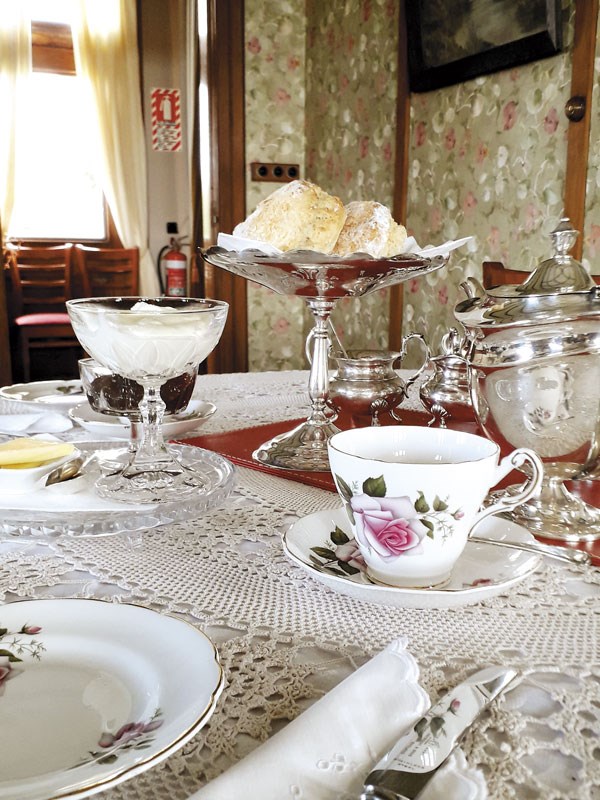 |
Delicious Devonshire Tea |
A large dining room is set up for visitors to enjoy Devonshire teas, beautifully presented on bone china and silverware. These are served by the current proprietor, Dale Pullen, who greets visitors dressed in clothing of the era.
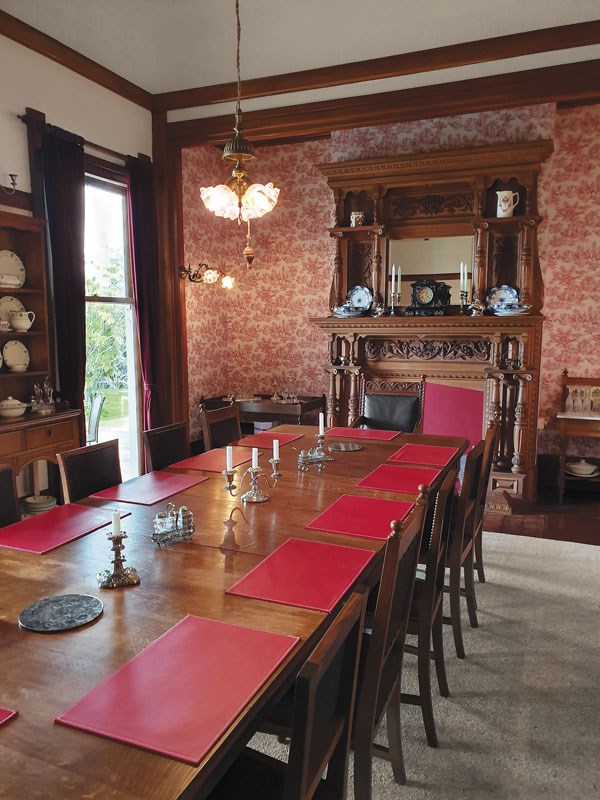 |
The formal dining room |
Dale took on the lease of the property last year and now offers a bed and breakfast option to visitors. As the homestead was currently between visitors, Dale was kind enough to allow us to wander through and view the bedroom suites.
It felt like stepping back in time, with each room featuring antique furniture and kept meticulously clean and tidy. It can’t be easy keeping a huge, historic property at such a high standard. Each of the six bedrooms offers magnificent views over the large lawn and gardens.
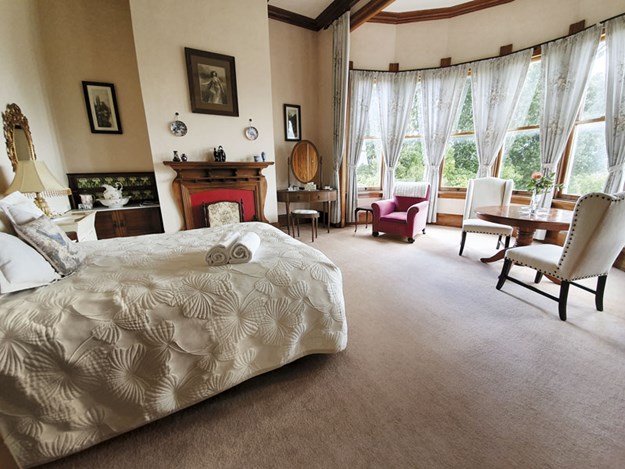 |
The big, beautiful Bridal Room |
The Bridal Room is particularly stunning, with a massive bay window and fireplace. This room is the highest priced in the range, $165 per night including breakfast (an absolute bargain in my opinion), the others a mere $155.
For those staying over, be sure to ask Dale to show you what’s behind the door of the Store Room. I believe it’s the favourite of many visitors. But my lips are sealed. Behind the homestead is The Stables building.
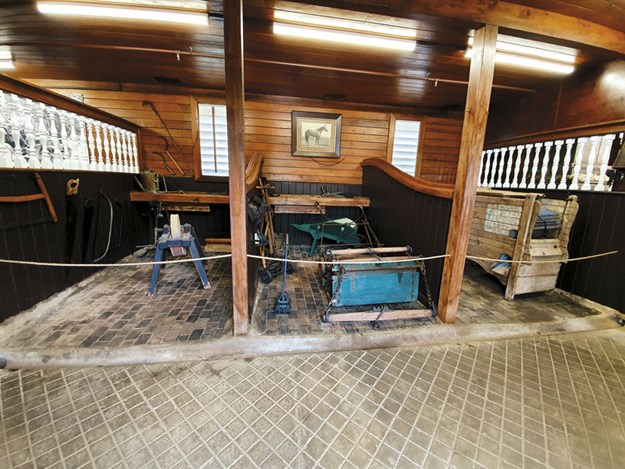 |
Antique machinery in the museum |
This Category 2 heritage building once housed the generator for electricity, as well as the horses, and has been lovingly restored into a museum and visitor centre. Each room displays equipment from the time including a saddlery, a horse-drawn cart, and tools and antique machinery on the property from the early 1900s.
A sanctuary for natives
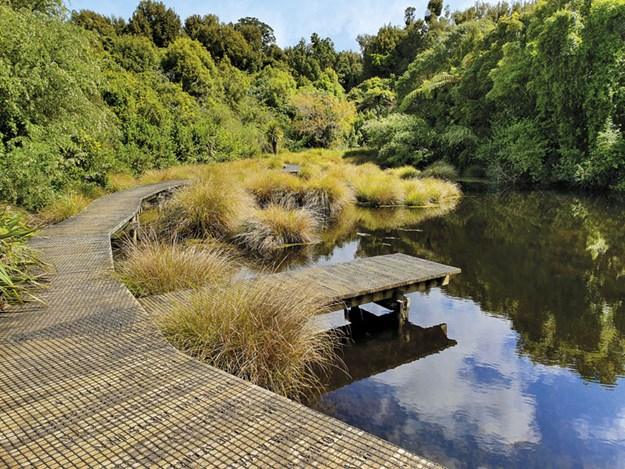 |
The wetlands |
Considered to be among the best restoration ecology projects in Australia and New Zealand, Bushy Park Sanctuary is set on 100ha of native bush, rainforest, and wetlands. Visitors can wander through a network of forest paths and wetlands that are home to native species such as rimu, mamaku, pukatea, and rātā.
A highlight of the forest walk is a massive northern rātā known as Rātānui (Big Rātā). At 43m high with a girth of more than 11m, the tree is thought to be the largest rātā tree in the world and is believed to be 800 to 1000 years old.
Alongside the rainforest, the wetlands is home to rare native plants, geckos, frogs, freshwater bullies, and a plethora of insects. Recently, it has been replanted and restored with wide boardwalks and an amphitheatre for educational talks and group visits.
Thanks to an intensive pest-eradication programme, including a 4.8km predator-proof perimeter fence, the park is free from the stoats, ferrets, possums, hedgehogs and rats than once roamed freely. As a result, many of New Zealand’s native birds flourish in the park. And they certainly make their presence known.
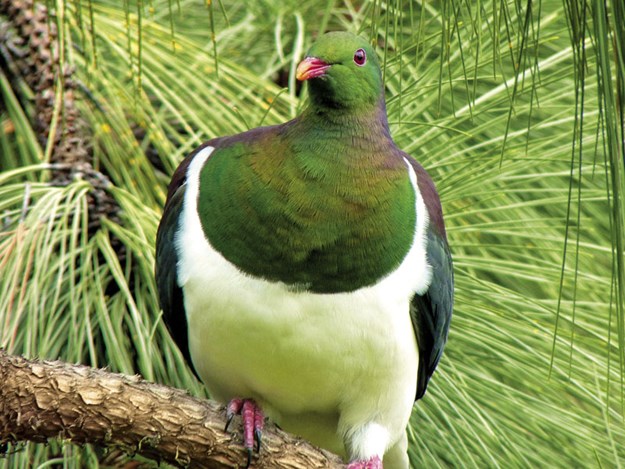 |
Kererū |
As we meandered the bush-clad pathway in the wetlands, we were accompanied by chattering families of saddlebacks, the familiar peep-peeps of cheeky pīwakawaka (fantails), and the loud whooshes of huge kererū (wood pigeons) as they clumsily attempted landings in thin branches not designed for their incredibly large frames.
Tūīs chased each other around the bush in gangs of five and six, puffing their chest feathers and singing melodiously. And occasionally we heard the call of an elusive hihi (stitchbird), 44 of which were first released into the park in 2013, with several more releases in the years since.
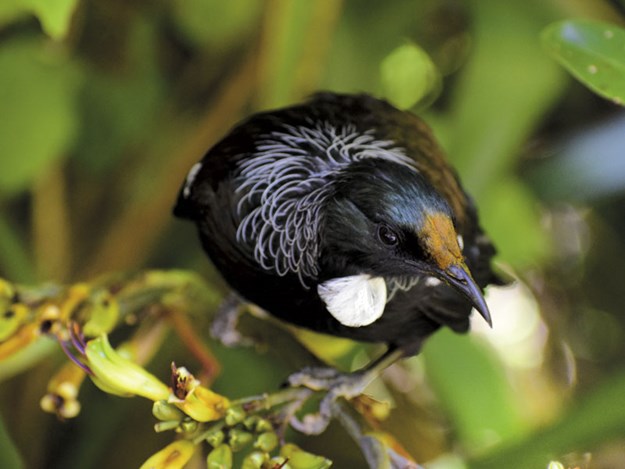 |
Tūī |
The hihi are doing well at the park, supported in no small part by the many volunteers who replenish special hihi feeders with sugar water every few days and help maintain nesting boxes throughout the forest.
Volunteers also do a great job of setting and monitoring pest traps, along with checking and maintaining the perimeter fence, weed control, educational tours, and general care and upgrades around the huge property. It’s a never-ending task, but one that’s highly valued.
Motorhome stays
Bushy Park also provides accommodation for self-contained motorhomes, with two powered and several non-powered sites. The campsite is beautiful and I can imagine that waking up to the dawn chorus of birdsong would be magical. Discounts are available for NZMCA members. Space is limited, though, so it’s a good idea to book ahead.
For more information
- Bushy Park Sanctuary is at 791 Rangitatau East Road, Kai Iwi (off SH3).
- The sanctuary bush walks are free, but a donation is appreciated.
- Devonshire teas are available at $14 per person (Tuesday to Sunday, plus public holidays,
- 10am to 4pm).
- For more about accommodation and venue hire, visit bushypark.co.nz
- To learn more about the sanctuary, visit bushyparksanctuary.org.nz

